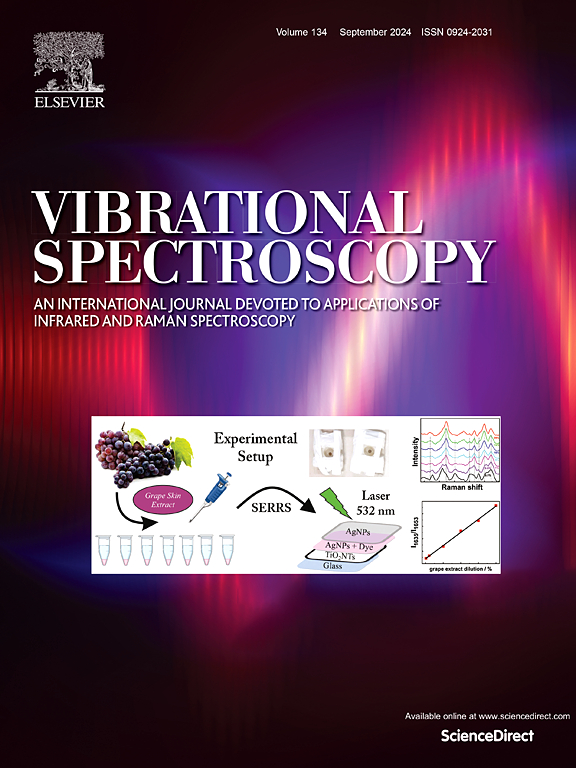ATR-FTIR光谱联合化学计量学在急性心肌梗死死后诊断中的应用
IF 3.1
3区 化学
Q2 CHEMISTRY, ANALYTICAL
引用次数: 0
摘要
心肌梗死(MI)是猝死的主要原因;然而,由于缺乏特定的早期形态学标记,在死后检查中鉴定急性心肌梗死仍然具有挑战性。本研究探讨了衰减全反射-傅里叶变换红外光谱(ATR-FTIR)结合化学计量学分析在心肌梗死死后诊断中的应用。采用心肌梗死大鼠模型,定量分析了JUNB和肌红蛋白(MYO)的表达水平和蛋白浓度,以证实光谱结果。ATR-FTIR分析显示,对照组和心肌梗死组之间的胶原蛋白和核酸含量发生了显著变化,尤其是在死后早期。主成分分析(PCA)和层次聚类分析(HCA)通过基于PCA的线性判别分析(LDA)实现了组间的成功区分,灵敏度和特异度分别达到100 %和97 %。支持向量机(SVM)分类进一步证实了这些发现。值得注意的是,3285、3016、2920、1338、1236和974 cm⁻¹ 的光谱变化与JUNB和MYO基因和蛋白质水平有很强的相关性。这种综合方法表明,ATR-FTIR光谱与多变量分析和分子标记相结合,为急性心肌梗死的早期死后诊断提供了一种快速、非破坏性和高度准确的方法,突出了其在法医和临床应用中的潜力。本文章由计算机程序翻译,如有差异,请以英文原文为准。
The usage of ATR-FTIR spectroscopy combined with chemometrics in postmortem diagnosis of acute myocardial infarction
Myocardial infarction (MI) represents a leading cause of sudden death; however, the identification of acute MI in postmortem examinations remains challenging due to the lack of specific early morphological markers. This study explores the utility of attenuated total reflectance-Fourier transform infrared (ATR-FTIR) spectroscopy, in combination with chemometric analysis, for the postmortem diagnosis of MI. A rat model of MI was employed, and the expression levels and protein concentrations of JUNB and myoglobin (MYO) were quantified to corroborate the spectral findings. ATR-FTIR analysis revealed significant alterations in collagen and nucleic acid content between the control and MI groups, particularly during the early postmortem intervals. Principal component analysis (PCA) and hierarchical cluster analysis (HCA) successfully differentiated between groups, achieving 100 % sensitivity and specificity, and 97 % classification accuracy through PCA-based linear discriminant analysis (LDA). Support vector machine (SVM) classification further confirmed these findings. Notably, spectral changes at 3285, 3016, 2920, 1338, 1236, and 974 cm⁻¹ exhibited strong correlations with JUNB and MYO gene and protein levels. This integrative approach demonstrates that ATR-FTIR spectroscopy, combined with multivariate analysis and molecular markers, offers a rapid, non-destructive, and highly accurate method for the early postmortem diagnosis of acute MI, highlighting its potential for forensic and clinical applications.
求助全文
通过发布文献求助,成功后即可免费获取论文全文。
去求助
来源期刊

Vibrational Spectroscopy
化学-分析化学
CiteScore
4.70
自引率
4.00%
发文量
103
审稿时长
52 days
期刊介绍:
Vibrational Spectroscopy provides a vehicle for the publication of original research that focuses on vibrational spectroscopy. This covers infrared, near-infrared and Raman spectroscopies and publishes papers dealing with developments in applications, theory, techniques and instrumentation.
The topics covered by the journal include:
Sampling techniques,
Vibrational spectroscopy coupled with separation techniques,
Instrumentation (Fourier transform, conventional and laser based),
Data manipulation,
Spectra-structure correlation and group frequencies.
The application areas covered include:
Analytical chemistry,
Bio-organic and bio-inorganic chemistry,
Organic chemistry,
Inorganic chemistry,
Catalysis,
Environmental science,
Industrial chemistry,
Materials science,
Physical chemistry,
Polymer science,
Process control,
Specialized problem solving.
 求助内容:
求助内容: 应助结果提醒方式:
应助结果提醒方式:


